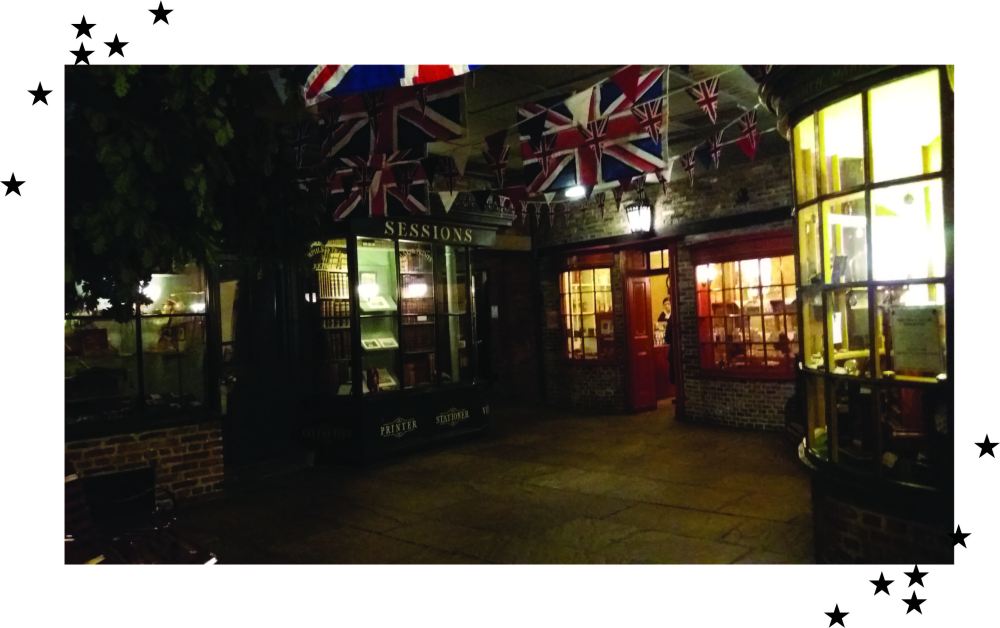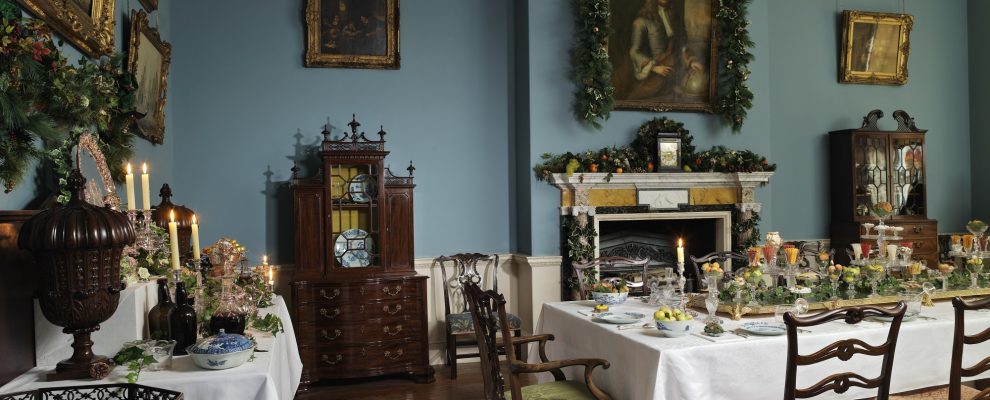There are so many amazing things to do in York, it’s the perfect city for a New Year getaway or a chance to escape the hectic work life for a weekend mid-year. So, I thought I’d do another follow-up post from my first culture guide about York, which you can read here, and suggest some more beautiful, cultural spots to explore in York. The previous post focused on the Minster area of York, this one covers the other areas of the city, from the medieval streets, deep in the centre of York to the National Railway Museum right next to the railway station. Although there’s definitely a strong focus on heritage days out, I’d highly recommend all these spots to anyone if you’re visiting/ living in/ or a student in such a beautiful city, as they’re an engaging way to explore the city.

(Photo from Jorvik Centre website)
Jorvik Viking Centre
The Jorvik Viking Centre is such a great family activity in York, it’s not only full of history about the Viking city but is also incredibly interactive and great fun. The museum is situated on Coppergate, the site of several Viking houses, workshops and backyards, discovered between the years 1976-81 by archaeologists from the York Archaeological Trust. The museum shows the foundations of some of the medieval structures through glass panes on the floor, meaning you are able to walk over the actual excavation site. The centre also has a brilliant collection of some of the finds from the excavation site, including necklaces, combs and even a Viking poo! However, the highlight of the museum is definitely the reconstructed Viking village, which you are able to explore using an electronic ride which guides you around the village, complete with animatronic characters, immersive voices and smells from the time. It’s such an amazing museum, definitely my favourite in York!
See the Jorvik Centre website here.
York Castle Museum
The York Castle Museum is a large yet quirky museum; with such a range of exhibits, there’s definitely something for everyone to enjoy on a day out. The museum itself was founded in 1938 using the collections of Dr Kirk, a local York doctor, who was fascinated by the traditions and rural ways of life soon disappeared during the onset of the industrial revolution. Unlike many museums, York Castle Museum is curated by theme rather than chronologically, which is a great way to explore the progression of each type of object, for example, children’s toys, of which there is an amazing exhibition area. One of the highlights of the museum has to be the Victorian Street, Kirkgate, which was one of the first recreated indoor streets of its kind in Britain, and it’s been the centrepiece of the museum since its opening. The street transports the visitor to the Victorian era, with recreated shops and workshops, many of which are based on actual shops once found in York. To add to the immersive aspect of the street, Kirkgate is filled with volunteers, dressed in costume ready to answer any questions! Although the street is brilliant all year round, around Christmas time, the street is decorated for a Victorian style Christmas, so it’s well worth a visit around that time of year.
See the York Castle Museum website here.
Clifford’s Tower
In the same area as Castle Museum is Clifford’s Tower, the last remains of York’s medieval castle. A wooden castle originally stood on the site of the stone castle, first established by William the Conqueror during the early years of the Norman Invasion. However, this was burnt down in 1190 during the terrible events of the Jewish Massacre, in which the entire city’s Jewish community was trapped inside the castle by an aggressive mob. Many of the Jews inside the Tower chose to commit suicide rather than face being forcibly baptised or murdered by the crowds, just before the mass suicide they set alight to the possessions they’d brought with them, subsequently burning the wooden castle to the ground. The current stone Castle you can visit today was rebuilt in during the 13th century and played a prominent role within the city in the centuries to come. The castle has a very rich history, so if you want to find more about the history of the castle please visit the history section of the website here. As well as being a chance to discover more about York’s history and the role of the castle from the Norman invasion to present day, one of the best things about visiting Clifford’s Tower is the view. You can walk the whole way around the castle, taking in the view from all angles, including the Minster, Castle Museum and the rest of the picturesque city.
See the Clifford’s Tower website here.
(Photo from Fairfax House website)
Fairfax House
Fairfax House is a beautifully preserved Georgian Townhouse, set on one of York’s former principal streets, Castlegate. The house was completely refurbished during the early half of the 18th century by architect John Carr, to reflect the elaborate taste of the Fairfax Family. Fairfax House served as a city residence for the family, away from their principal seat at Gilling Castle, 20 miles outside of York. Fairfax House’s prominent position within the city made it perfect for the winter social events of balls and assemblies and in the summer, the racing at York Racecourse. One of the highlights of Fairfax house is the stuccoed ceilings in many of the rooms in the house, including the grand staircase. The work is supposedly that of famous Swiss- Italian stucco artist Giuseppe Cortese, who worked in the north of England between 1720 and 1760. The designs on each ceiling are amazingly complex, reflecting the tastes of the family and functions of the room. The house is also home to an impressive collection of clocks, many of which are designed by the most prominent clockmakers of the 17th and 18th centuries. Fairfax House is definitely worth a visit if you want to step back in time and discover the grandeur of Georgian York.
See the Fairfax House website here.
(Photo from visityork.com website)
The National Railway Museum
As the largest train museum in Europe, The National Railway Museum has a massive collection of trains, from the iconic Flying Scotsman to the Japanese 1960s Bullet Train. Each train is presented in unique and interesting ways, allowing the visitor to see and walk around some and understand the mechanics behind others. I’m not overly interested in trains, however, the museum is engaging and makes the collection interesting to non-train lovers. I found the royal carriages and recreated Station Hall so fascinating, as you were able to see genuine artefacts from over 100 years of the Hall serving as a working railway building. I also love the collection of other railway related artwork, objects and ephemera on display in the Collections Store and the exhibition space. As the trains themselves account for only 0.5% of the Museum’s collection, these exhibitions serve as an alternative way of telling the story of the nation’s railways. The museum is definitely worth a visit, especially if you’re travelling by train, as it’s just around the corner from the station.
See the National Railway Museum website here.
The Shambles
The Shambles has to be one of the top tourist destinations in York, a beautifully preserved cobbled street lined with Elizabethan buildings. The word ‘Shambles’, refers to a single place where butchers sold meat from stalls in front of their shop fronts, the majority of buildings along the street were in fact butchers or slaughterhouses. Today, the Shambles is home to quaint shops and eateries, including a number of Harry Potter inspired shops. The Elizabethan buildings are also beautiful to see, with the original hooks and wide shelves to present the meats, now used as window sills. You can also see the iconic overhanging upper floors of the buildings, known as Jetties, which helped to give more space in the upper floors and also possibly protected the hanging meat below from the sun and rain.
See a York Tourism website here for more history on the Shambles.
I hope you’ve enjoyed reading this second instalment of my York Culture Guide. I’m hoping to get a York Cafe Guide and a Day Trips Outside of York Guide up soon so look out for both of those.
Have you got any favourite places to visit in York?







Thank you. I always thought that living on a remote, rural property would have been socially isolating, so having a city townhouse made perfect sense. Fairfax House must have been a delight. I don’t remember seeing other works by architect John Carr but if the family wanted to shine during the ball season, they had to have the best of the best.
LikeLiked by 1 person
Glad you enjoyed it! Yes, I believe many wealthy families had houses in the city and the countryside, best of both worlds! I was quite unfamiliar with John Carr as well, he is best known for his Palladian architecture at Harewood House and Basildon Park amongst others, definitley worth a research.
LikeLike